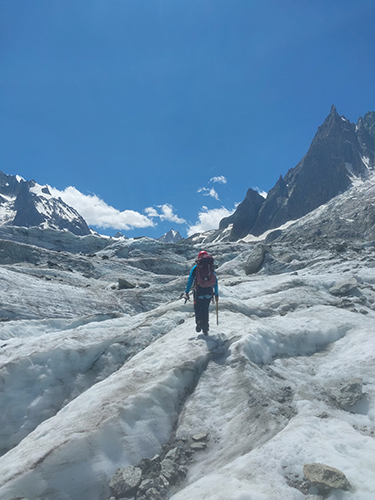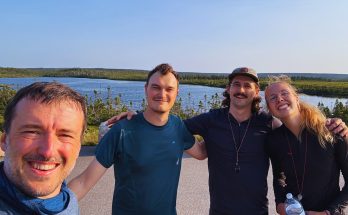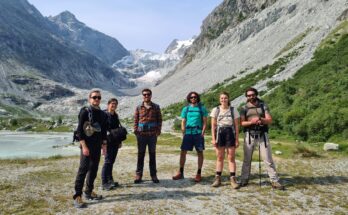Cette publication est également disponible en :
![]() Français
Français
This summer, three young scientists including Léa Rodari (student of the master in Environmental Science) went to the Mer de Glace (Chamonix, France) to extract icebound rocks.
Their aim is to measure the time during which these rocks have passed through the glacier, using rock surface luminescence dating. This fieldwork marks the first step in a novel approach to directly quantifying the movement of ice and the objects it contains.
Glaciers are not inert objects. Their mass is constantly moving from top to bottom, under the effect of gravity. With melting due to global warming, we are currently finding all kinds of debris, material – even human remains – at the end of the glacier tongue. Most often these objects were buried well upstream and were transported down with their surrounding ice. But how long did it take for these particles to make their journey and remain buried in the ice? Currently the evaluation of glacial dynamics (= speed of movement of the glacier) is mainly based on theoretical data and numerical models. Prof. Georgina King and her team are seeking direct observations of the glacier’s movement. To do this, she intends to determine the duration of burial of rocks that have been buried within the glacier, until their re-appearance in the open air. This new approach to the study of glacial dynamics is based on applying the luminescence dating technique to minerals contained in rocks.
The idea for the project comes from the fact that, although we know a lot about glaciers, we don’t know how long it takes to transport fragments within them, and that is because there were no methods available that you could use to really measure that.
Glacier movements can have consequences for the downstream water regime (e.g. flash floods) or for the stability of glacier margins, for example. It is therefore important to understand glacier dynamics in order to better anticipate these risks.
The first stage of this research took place this summer at the Mer de Glace above Chamonix (France). Léa Rodari student of the Master in Environmental Sciences and Audrey Margirier (post-doctoral fellow at the Institute of Earth Surface Dynamics – IDYST) shared their field experiences in this landscape that is both magnificent and physically and technically demanding.
The first challenge of this expedition was to find interesting sites in the middle of the immensity of the glacier tongue, covered with rocky debris. The young scientists walked for two days to spot potential samples. One of the main difficulties was to distinguish the recently fallen rock debris from the summits from those that had stayed within the ice. In order to circumvent this pitfall, they took the option of concentrating their research on steep slopes (bordering crevasses or the supraglacial river,) which are free of debris that had fallen from the summits (i.e. where it was certain that the debris were englacial). The second challenge was to access these samples trapped in the ice cliffs.
Sometimes we spotted an interesting rock on an ice slope in front of us, but we didn’t see it at all once we got to the top of the cliff, the wall being too vertical. Several times we had to rappel “blind”.
Audrey Margirier
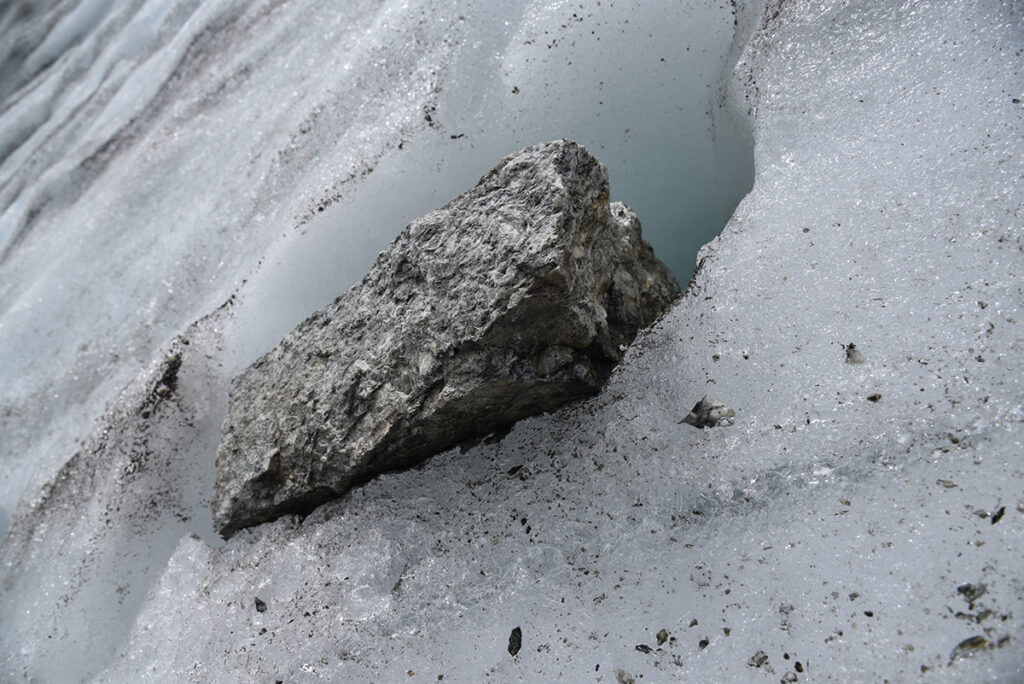
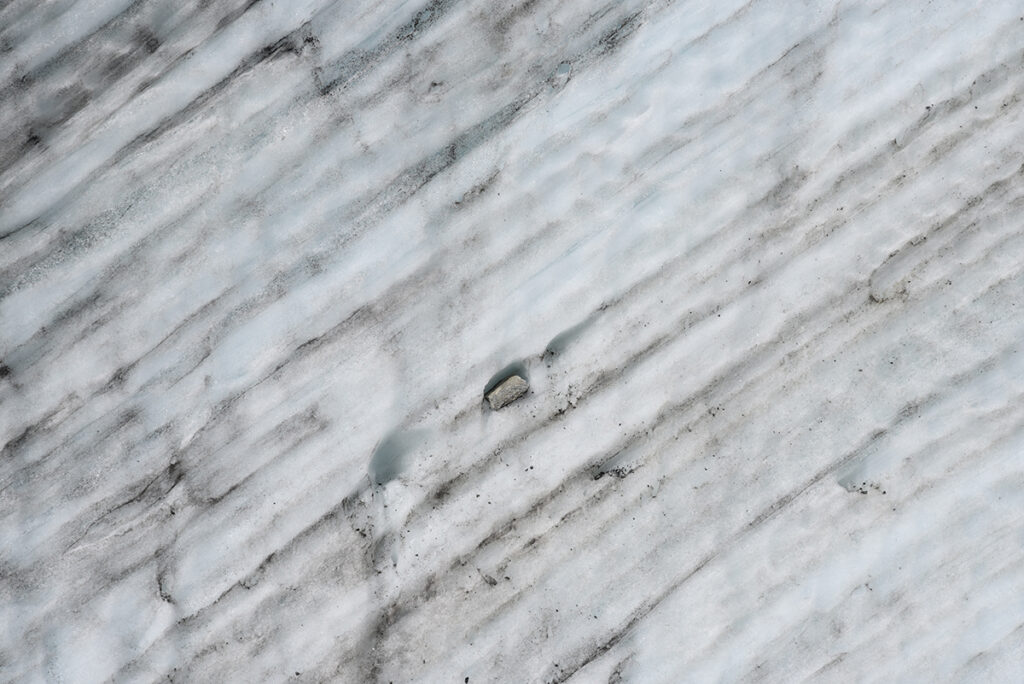
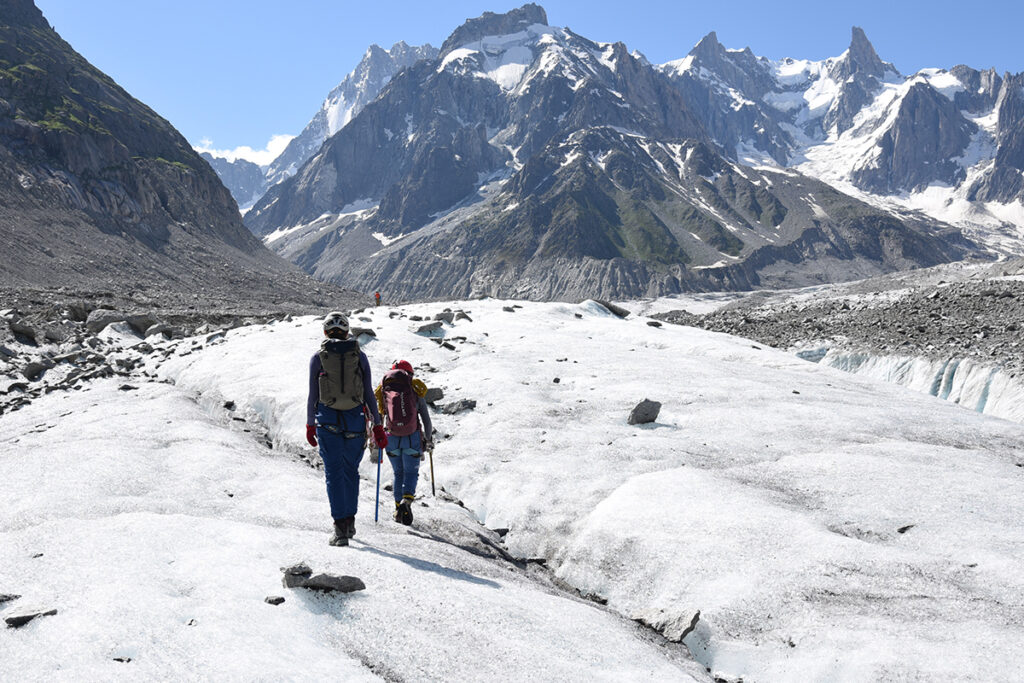
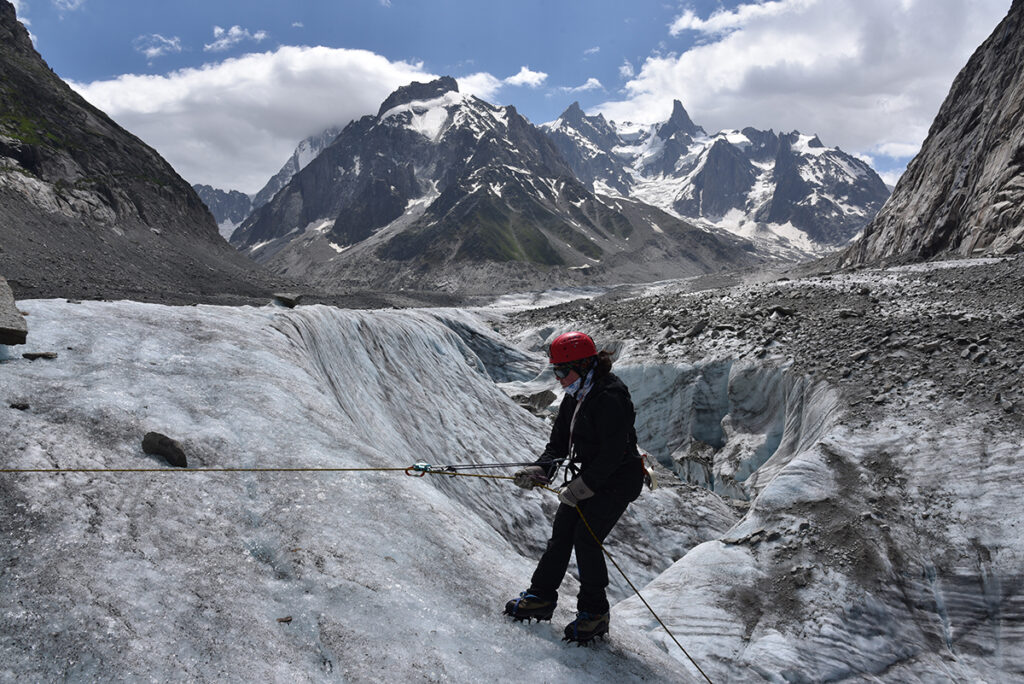
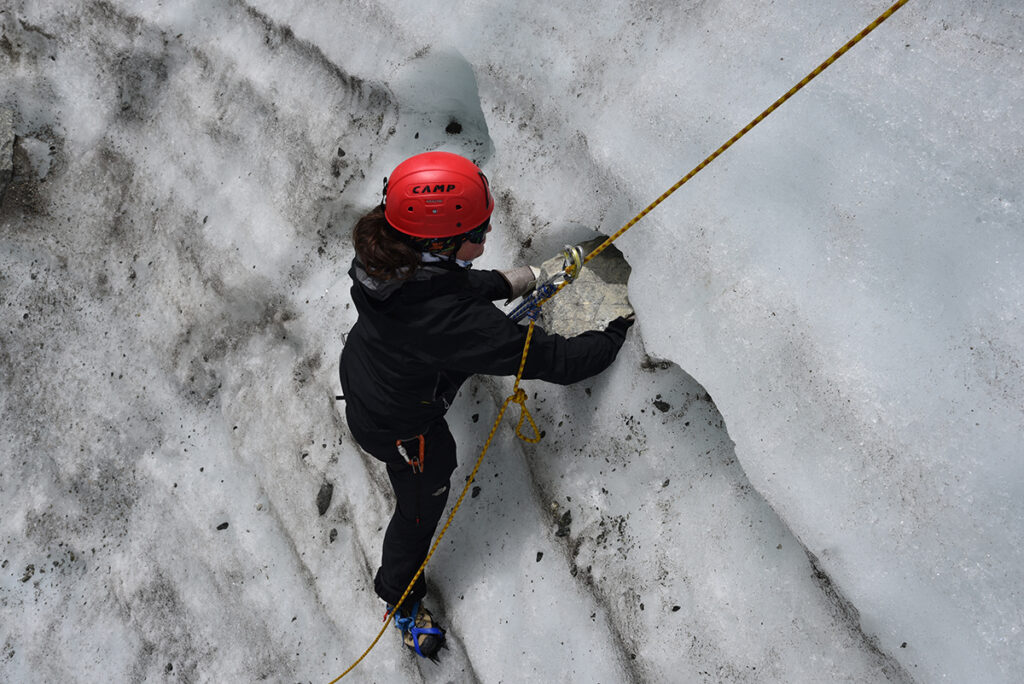
The rocks extracted from their surrounding ice were directly packed in opaque black bags to protect them from daylight, which interferes with the luminescence analysis. These samples were then prepared in the laboratory: cores were cut from the surface of the rocks, then sliced into thin 1mm discs. These operations were carried out in red light so as not to disturb the luminescence signals of the minerals in the rock.
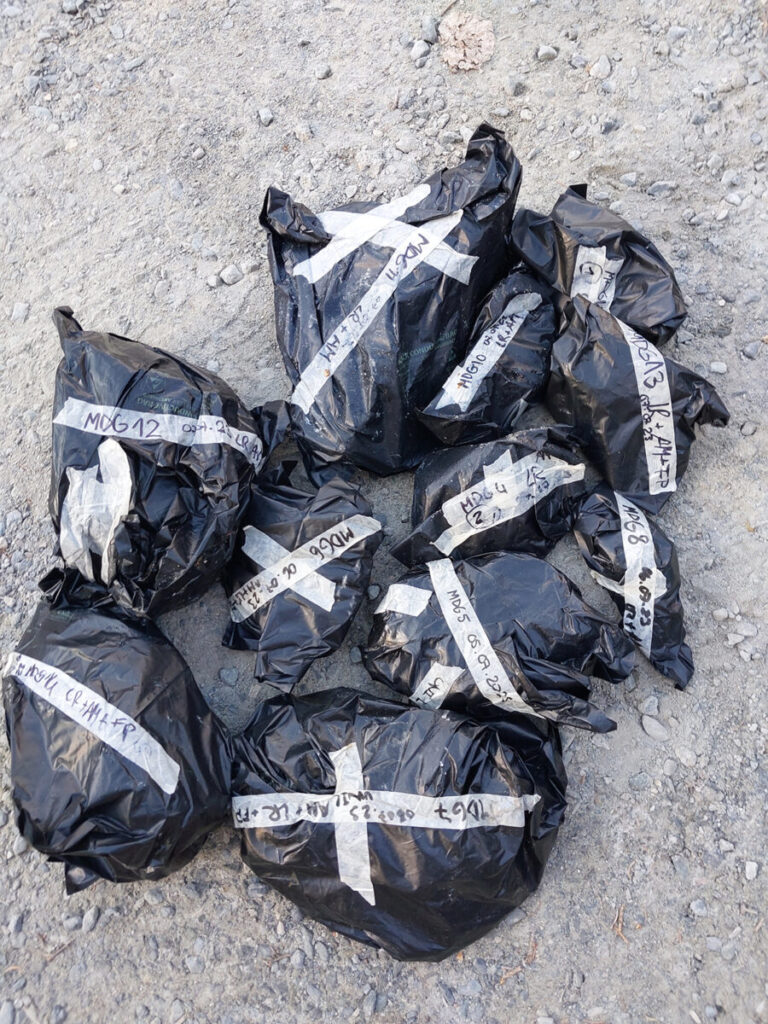
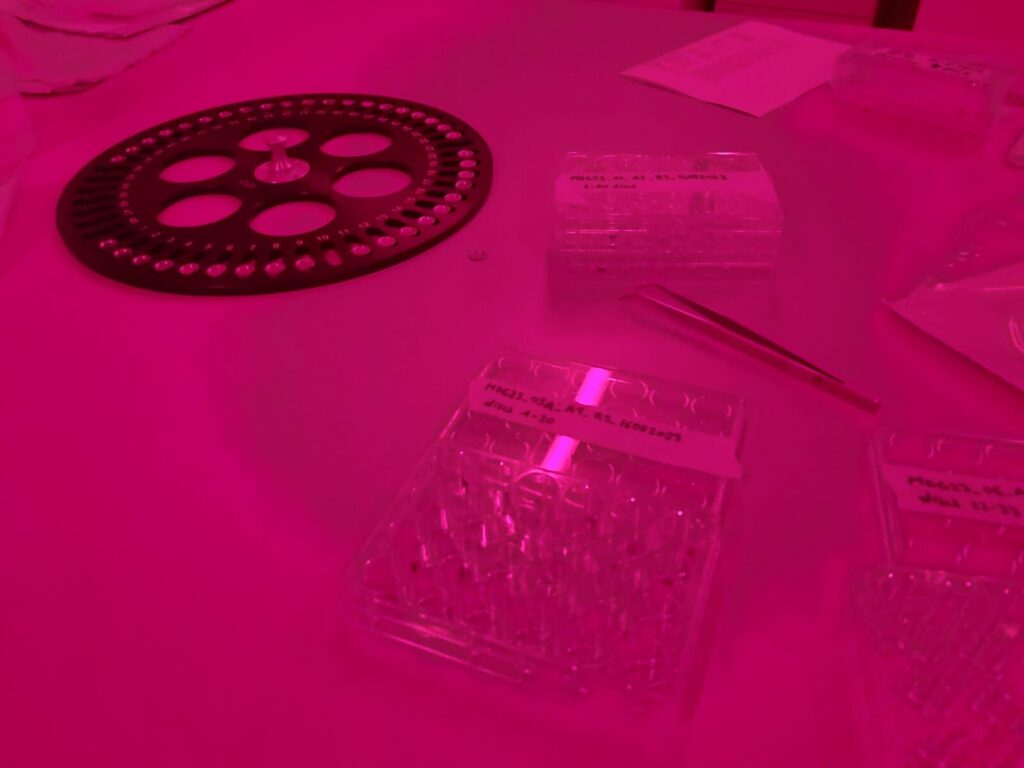
Prof. Georgina King explains what luminescence in rocks is
Luminescence is the emission of light by minerals contained in rocks. The reason for this light emission is that these minerals, over time, have been exposed to radiation emitted by surrounding minerals, causing electrons to shift and become trapped in defects within the mineral. Exposing these samples to light of a certain frequency or color in the laboratory (in this case, blue or infra-red light), causes these electrons to return to their original orbit. This movement is accompanied by the emission of light of a different color, which can be measured. The amount of light emitted corresponds to the time during which the samples remained buried in the glacier, and therefore to the time it took the glacier to transport these rocks into the ice.
It now remains to perform the luminescence analyses. This work will determine the duration of burial of the rock (time during which it was plunged into darkness within the glacier). The team is excited to get the first results to compare them with the values used so far. Georgina King concludes :
We hope that the values we obtain will agree with the values predicted from numerical models. Otherwise, we will have some interesting discussions with the glaciologists to identify where the differences lie.
Georgina King
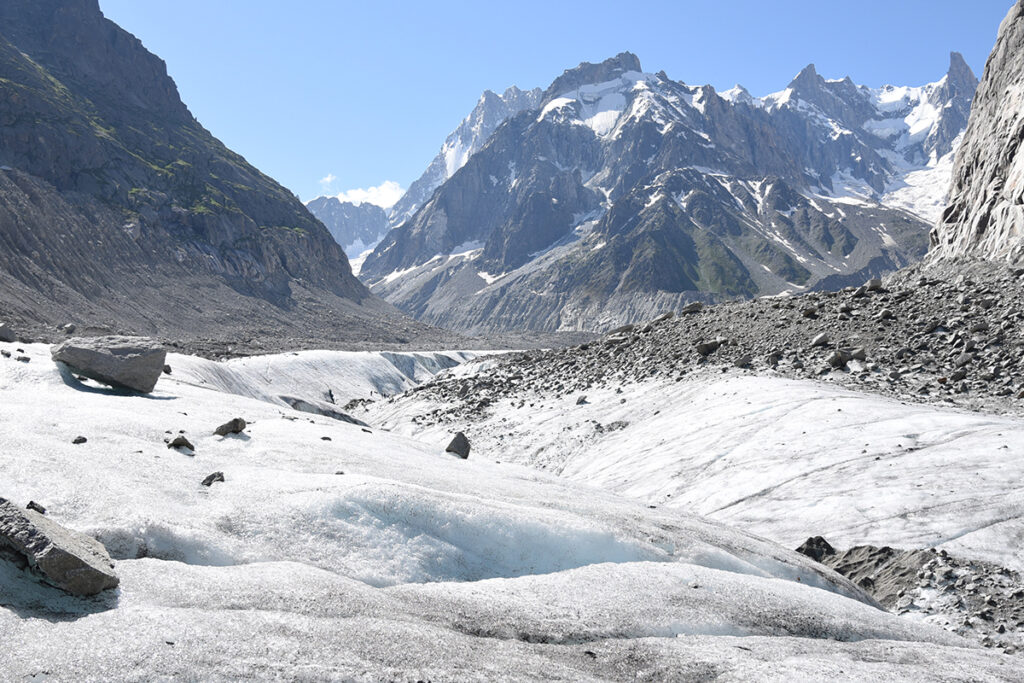
Going into the field involves risks
They are quite high in this particular case, and required appropriate measures that were effectively put in place to ensure smooth operation. The FGSE has drawn up a guideline and a process to enable scientists going into the field to prepare their outing and assess the risks involved (preliminary risk assesment). External resources for information on the nature of the terrain are also mentioned (e.g. WSL-natural hazards for excursions in Switzerland).
In the case of this research involving work on a glacier, people going out on site must undergo an appropriate prior training especially if they have no or weak previous practical experience on this field and its constraints (snow cover, crevasses locating, wheather analysis and monitoring etc.) use of equipment (proper use of crampons, ropes etc.) In this particular case, lone working is outlawed: as a precaution, activity on the glacier must involve the simultaneous presence of at several people, as this team of three scientists.
So even though the images may reflect an idyllic landscape, and “fun” activities, this fieldwork, like all others, required a very meticulous preparation and prior training to ensure that risks are minimized in terrain conditions which, as the images show, are very demanding for participants. Risk is always present, even for experienced and well-equipped people, and must be a constant concern, both for others and for ourselves.
